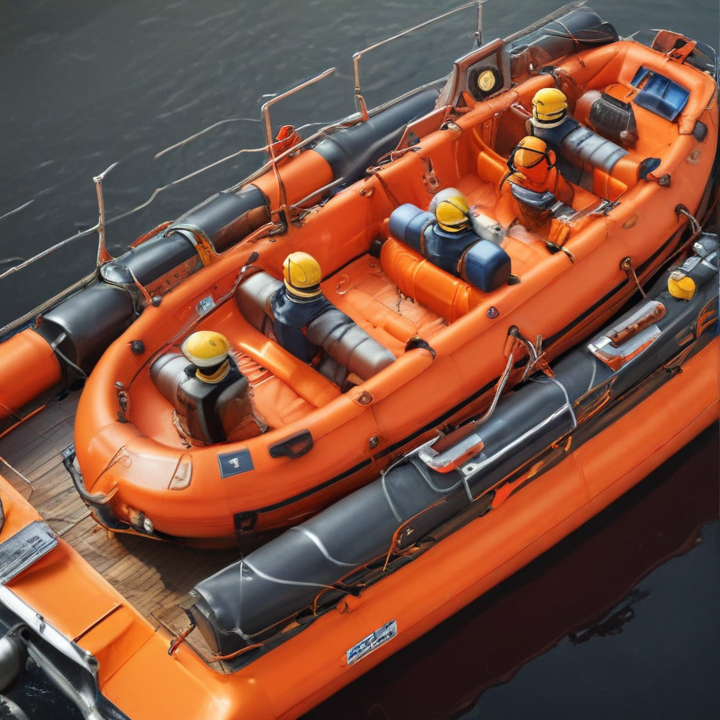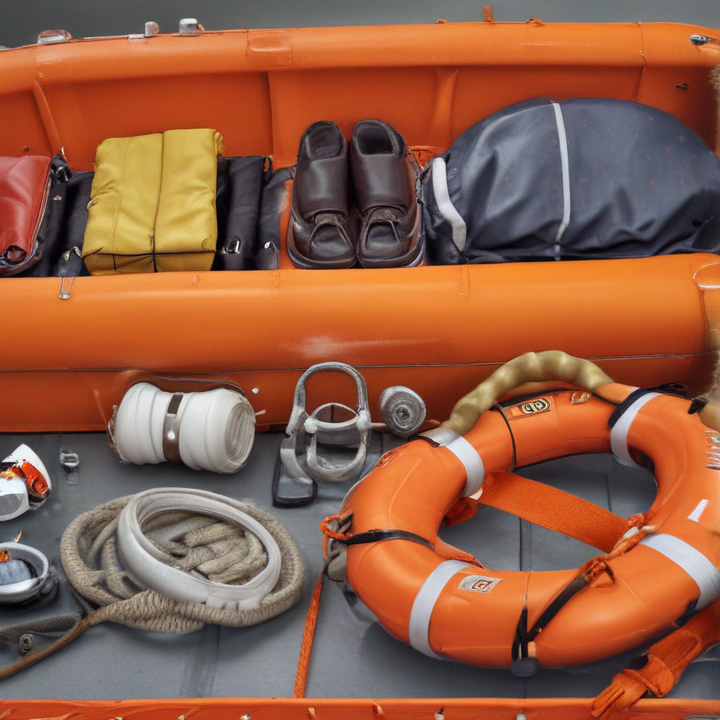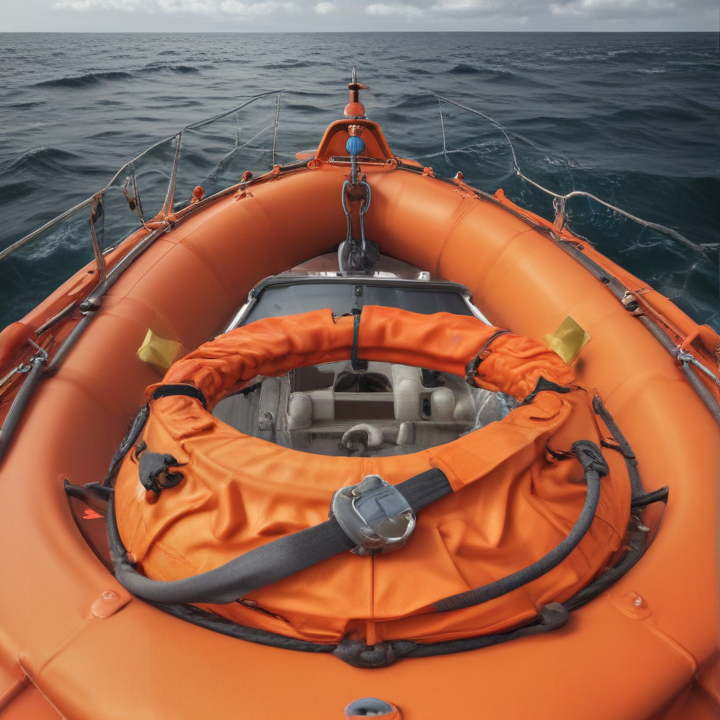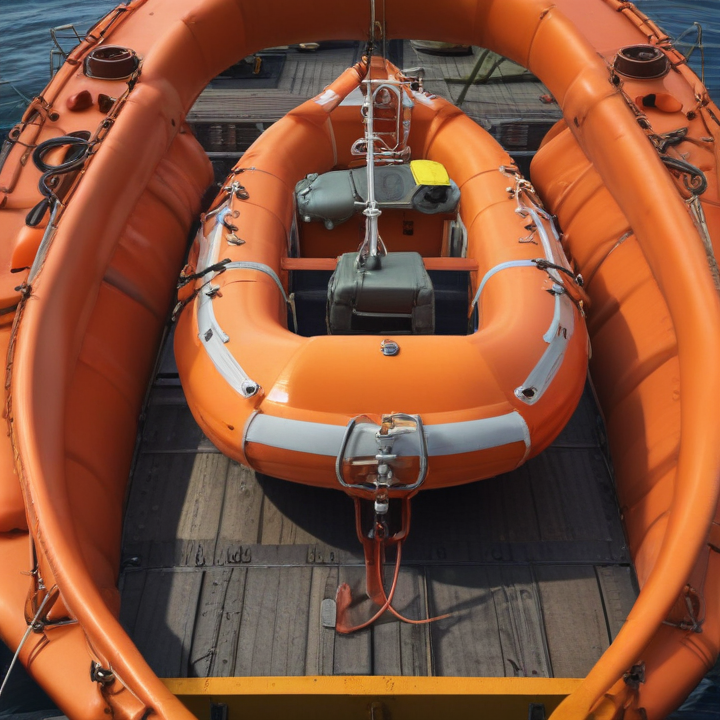Lifeboats and Safety Equipment Safety Certifications
Lifeboats and safety equipment are crucial for ensuring the safety of passengers and crew during maritime emergencies. Their certifications and standards ensure they meet stringent safety requirements. Here are key aspects:
1. SOLAS (Safety of Life at Sea) Convention: This is the primary international treaty for maritime safety, mandating lifeboat and safety equipment standards. It specifies requirements for lifeboat capacity, maintenance, and regular drills.
2. MARPOL (International Convention for the Prevention of Pollution from Ships): MARPOL regulations also encompass certain safety equipment to prevent pollution in emergencies.
3. Lifeboat Types and Standards: There are several types of lifeboats, including open lifeboats, partially enclosed lifeboats, and totally enclosed lifeboats. Each type must be compliant with SOLAS regulations regarding their construction, buoyancy, and stability.
4. Life Rafts: These must meet ISO standards (ISO 9650 for recreational boats, ISO 15738 for commercial). In open sea conditions, liferafts should be self-righting, thermally insulated, and equipped with survival kits.
5. Personal Survival Equipment: This includes lifejackets, immersion suits, and lifebuoys. Lifejackets must comply with the International Life-Saving Appliance (LSA) Code, ensuring they are buoyant and easy to wear.
6. Safety Training and Drills: Crews must be trained according to the STCW (International Convention on Standards of Training, Certification, and Watchkeeping for Seafarers). Regular drills are mandatory to ensure preparedness.
7. Inspection and Maintenance: Regular inspections by classification societies like Lloyd’s Register, Bureau Veritas, or the American Bureau of Shipping (ABS) ensure equipment remains functional.
8. Certification: Lifeboats and related safety equipment must have certifications from recognized bodies ensuring compliance with international standards. This may involve undergoing rigorous testing and periodic reassessment.
By adhering to these certifications and standards, ships ensure that they are equipped to handle emergencies effectively, safeguarding lives at sea.
List Reference Technical Parameters of “Lifeboats and Safety Equipment”
救生艇及安全设备技术参数参考
#### 救生艇
– 长度: 5.5米 – 8.5米
– 宽度: 2.0米 – 3.0米
– 高度: 1.2米 – 2.5米
– 容量: 20人 – 150人
– 重量: 空艇重量800公斤 – 4500公斤
– 发动机: 单缸或双缸柴油发动机,5马力 – 100马力
– 航速: 6节 – 8节
– 材质: 玻璃纤维增强塑料 (FRP) 或铝合金
– 自给燃料: 24小时以上
– 自给水源: 每人3升 – 5升
– 通信设备: VHF无线电、EPIRB
#### 救生筏
– 容量: 6人 – 50人
– 材质: 高强度橡胶或PVC
– 储存方式: 可折叠储存在硬质筏袋或软袋中
– 充气时间: 1分钟 – 3分钟
– 抗风等级: 6级 – 10级风
#### 救生衣
– 浮力: 150牛顿 – 275牛顿
– 材质: 高密度聚酯纤维或尼龙布
– 适用温度范围: -30°C – 65°C
– 颜色: 高可见度橙色或黄色
– 反光条: SOLAS标准反光条
– 哨子: 一体化救生哨
#### 信号设备
– 信号火箭: 可见范围15公里 – 20公里
– 烟雾信号: 持续燃烧时间3分钟 – 8分钟
– 灯光信号: 闪烁频率50次/分钟 – 70次/分钟,持续时间8小时以上
#### 应急医疗包
– 内容物: 消毒纱布、绷带、抗生素药膏、剪刀、急救手册
– 包装: 防水、防震保护

List Product features of “Lifeboats and Safety Equipment”
1. Durability: Made from high-strength, corrosion-resistant materials to withstand harsh marine environments.
2. Buoyancy: Designed to remain buoyant in both calm and rough seas, keeping occupants above water.
3. Capacity: Available in various sizes, accommodating from a few individuals to large groups.
4. Visibility: Equipped with brightly colored panels, reflective strips, and lights to enhance visibility, both day and night.
5. Emergency Supplies: Stocked with essentials such as food rations, fresh water, first aid kits, and signaling devices.
6. Ease of Deployment: Mechanisms for quick and easy deployment, often with automatic inflation systems for inflatable lifeboats.
7. Stability: Features such as ballast bags and sea anchors to enhance stability and reduce drift.
8. Weather Protection: Enclosed designs and canopies to shield occupants from the elements.
9. Communication Tools: Integrated with communication devices like radios or EPIRBs (Emergency Position Indicating Radio Beacons) for rescue coordination.
10. Safety Harnesses and Grab Lines: Internal safety harnesses and external grab lines to ensure occupants stay safely within the lifeboat.
11. Self-Righting: Some models equipped with self-righting capabilities to correct the lifeboat’s orientation in case it capsizes.
12. Training and Manuals: Comes with comprehensive user manuals and training resources to ensure proper use in emergencies.
13. Inspections and Certifications: Regularly inspected and certified by maritime safety authorities to ensure compliance with international safety standards.
These features collectively enhance the safety, reliability, and effectiveness of lifeboats and safety equipment, providing critical life-saving support during emergencies at sea.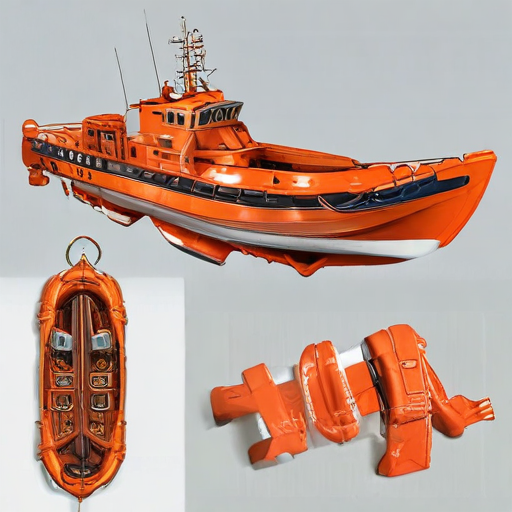
“Lifeboats and Safety Equipment” Warranty and Support
Our lifeboats and safety equipment come with a comprehensive warranty designed to ensure the highest standards of safety and reliability. The warranty period for lifeboats generally spans 5 years from the date of delivery, covering defects in materials and workmanship under normal use and maintenance. For safety equipment, the warranty period typically ranges from 1 to 3 years, depending on the specific item.
Support services include regular maintenance checks, emergency repairs, and replacement of faulty parts. We also provide detailed user manuals and training sessions to ensure proper usage and maintenance of the equipment. In case of any issues, our dedicated customer service team is available 24/7 to provide timely assistance and support.
To claim warranty services, customers are required to provide proof of purchase and a detailed description of the issue. Our technical support team will then assess the problem and determine the appropriate course of action, which may include repair, replacement, or other necessary measures.
For additional peace of mind, we offer extended warranty options and maintenance contracts, ensuring long-term protection and support for your lifeboats and safety equipment. Our goal is to provide reliable, high-quality safety solutions to protect lives at sea.
List “Lifeboats and Safety Equipment” FAQ
Lifeboats and Safety Equipment FAQ
1. What types of lifeboats are available on ships?
– Enclosed lifeboats: Offer maximum protection against weather and water.
– Partially enclosed lifeboats: Provide some protection, with easier access.
– Open lifeboats: No cover, often used on smaller vessels or as backup.
2. How are lifeboats launched?
– Gravity davits: Allow lifeboats to be launched quickly by gravity.
– Free-fall davits: Lifeboats are dropped into the water, typically from a higher deck.
– Hydraulic davits: Use hydraulic systems for controlled launching.
3. What equipment is typically found in a lifeboat?
– Rations and water: Supplies for a set number of days.
– First aid kit: Basic medical supplies.
– Navigation tools: Compass, flares, and signaling mirrors.
– Survival gear: Thermal blankets, fishing kits, and manual pumps.
– Communication devices: Radios or EPIRBs (Emergency Position Indicating Radio Beacons).
4. How often should lifeboats and equipment be inspected?
– Weekly: Basic checks to ensure readiness.
– Monthly: Detailed inspections of all parts and equipment.
– Annually: Comprehensive examination by certified personnel.
5. What are the main types of life-saving appliances on ships?
– Life jackets: Personal flotation devices for individuals.
– Life rafts: Inflatable rafts for larger groups.
– EPIRBs: Devices that send distress signals to rescue authorities.
– Immersion suits: Protect against cold water exposure.
6. What are the mandatory drills for lifeboats and safety equipment?
– Abandon ship drills: Conducted monthly to practice evacuation.
– Fire drills: Often include using lifeboats and rafts as part of the evacuation plan.
7. How are lifeboats maintained?
– Regular cleaning: To prevent corrosion and damage.
– Lubrication: Moving parts and davits require regular lubrication.
– Testing: Engines and other mechanical parts must be tested periodically.
8. Are there specific regulations for lifeboats and safety equipment?
– Yes, regulations are set by international bodies like the International Maritime Organization (IMO), particularly under the SOLAS (Safety of Life at Sea) convention.
Top 10 FAQ with answer about Lifeboats and Safety Equipment for Buyer Sourcing from China
## 关于从中国采购救生艇和安全设备的十大常见问题
1. 救生艇和安全设备的主要种类有哪些?
– 救生艇:充气救生艇、硬壳救生艇、自充气筏.
– 安全设备:救生衣、救生圈、烟火信号、应急定位示位标(EPIRB).
2. 这些设备符合哪些国际标准?
– 常见标准包括SOLAS(国际海上人命安全公约)、MED(海洋设备指令)、USCG(美国海岸警卫队)认证等.
3. 是否提供产品认证和测试报告?
– 大多数供应商会提供相应的认证和测试报告,如GL认证、EC认证等,请向供应商核实具体文件.
4. 如何判断供应商的信誉和质量?
– 查看供应商的资质证书、工厂审核报告、客户评价。可以通过B2B平台(如阿里巴巴、环球资源)和第三方机构调查.
5. 救生艇和安全设备的交货期一般是多久?
– 通常取决于订单量和生产周期,常见交货期为3-8周。建议买家与供应商确认具体交货时间.
6. 哪些付款方式适合国际贸易?
– 常见付款方式有电汇(T/T)、信用证(L/C)、支付宝、PayPal. 选择信誉好的供应商可以降低风险.
7. 最低订购量(MOQ)是多少?
– 不同供应商有不同的要求,一般来说,救生设备的MOQ较低,但救生艇的最低订购量可能会较高.
8. 是否可以进行定制生产?
– 大多数供应商可以根据客户需求进行定制,包括尺寸、颜色、品牌标识等.
9. 如何确定运输方式和费用?
– 常见运输方式包括海运和空运。运输费用取决于产品体积、重量以及运输距离。建议向货运代理咨询具体费用.
10. 售后服务和保修期是怎样的?
– 多数供应商提供1年到3年的保修服务,包括零部件更换和技术支持。确认供应商的售后服务条款和保修细节非常重要.

